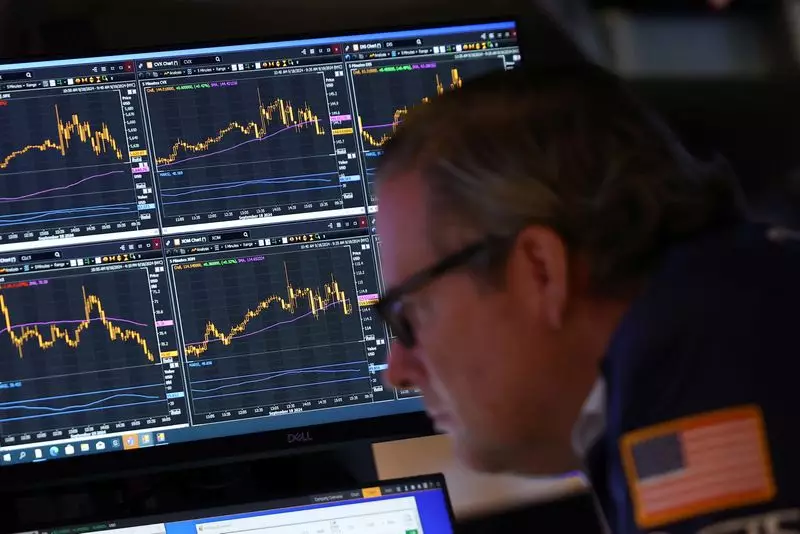As monetary policy continues to evolve, a significant trend is emerging within the investment community: the increasing appeal of U.S. exchange-traded funds (ETFs) designed specifically for dividend-paying stocks. This wave of interest has surged in the wake of the Federal Reserve’s decision to embark on a rate-cutting cycle, which began last month. Indeed, the 135 U.S. dividend ETFs, as monitored by Morningstar, experienced an impressive inflow of $3.05 billion in September. This starkly contrasts the monthly average inflow of only $424 million witnessed in the preceding eight months of 2024, exemplifying a marked shift in investor sentiment and strategy.
The interest in dividend-generating products is largely driven by the anticipation of a broader decline in yields. With the Fed hinting at additional cuts to interest rates, investors are seeking refuge in stocks that provide stable and predictable income. Nick Kalivas, a leading figure in the ETF strategy at Invesco, succinctly captures the current sentiment, stating that the monetary policy pivots are directing cash toward dividend-yielding stocks as investors reassess their portfolios.
Market Dynamics and Interest Rates
Nevertheless, it’s essential to recognize that this trend’s longevity may be contingent upon external market factors, particularly the fluctuations in U.S. Treasury yields. Since the beginning of this month, there has been a notable increase in benchmark 10-year Treasury yields, which recently reached a two-month high. This uptick could potentially temper the inflow of funds into dividend ETFs, especially given that the robust employment report suggests a robust economy that might not necessitate aggressive rate cuts in the near future.
Amidst the evolving economic landscape, advisers like Josh Strange, who heads Good Life Financial Advisors of NOVA, argue that the renewed enthusiasm for dividend-paying stocks is a response not only to rising bond yields and valuations in tech sectors but also to shifting monetary policies. Indeed, with the S&P 500’s valuation perched near its three-year peak at 21.5 times future earnings estimates, investors are compelled to scrutinize their allocations closely. The stark contrast between this valuation and its long-term average of 15.7 emphasizes a growing concern over concentrated momentum, particularly within sectors heavily driven by tech and artificial intelligence.
Seeking Balance: The Risks of High Dividend Stocks
While dividend ETFs offer attractive yield ranges—from just below 2% to as high as 3.6%—investors must approach this asset class with due diligence. In a climate where the yield on benchmark 10-year Treasuries has dropped to around 3.6%, the competitive landscape becomes crucial. Major players in the dividend ETF arena tend to includes stalwarts from various sectors including energy giants like Chevron and Exxon Mobil, financial institutions such as JP Morgan Chase, and consumer staples like Procter & Gamble.
However, the allure of high-dividend payouts doesn’t come without caveats. As Sean O’Hara, President of Pacer ETFs, points out, while yielding dividends may seem advantageous, it often demands a compromise. Investors inevitably want to align with companies that not only promise dividends but also demonstrate the capacity for growth and sustainable returns. Recognizing fundamentals is key: opting for companies with deteriorating performance could undermine long-term profitability.
To mitigate risks associated with volatile underlying fundamentals, some ETF providers, like Pacer, are curating portfolios that focus on companies exhibiting strong free cash flows. An illustrative example is the Pacer US Cash Cows ETF, which has notably attracted $7.1 billion in inflows over the past year, emphasizing the growing preference for companies that showcase sound financial health and capacity to increase dividends.
As the financial landscape continues to shift, the focus on dividend ETFs signifies a crucial development for investors seeking income stability. With ongoing fluctuations in interest rates and evolving economic indicators, the attractiveness of these investments may ebb and flow. However, the strategic positioning toward dividend-paying companies suggests a growing recognition of the importance of resilient fundamentals and value-driven investing in an increasingly unpredictable market. As advisors and investors alike remain vigilant, the future trajectory of dividend ETFs will depend on a delicate balance of market conditions, interest rates, and company performance.

